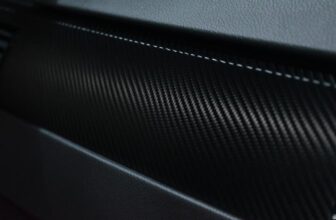
As you navigate the realm of automotive aerodynamics, you might find yourself intrigued by the subtle yet impactful shifts in design and technology that are shaping the future of vehicles. From the refined techniques in wind tunnel testing to the strategic use of lightweight materials, the automotive industry is witnessing a transformation towards enhanced efficiency and performance. But what lies beyond the surface of these emerging trends? Let’s explore the intricate web of advancements that are propelling automotive aerodynamics into a new era of innovation.
Evolution of Wind Tunnel Testing
Explore how wind tunnel testing has transformed the automotive industry by enhancing aerodynamic design efficiency and accuracy over the years. Initially, wind tunnel testing was a fundamental tool for assessing the aerodynamic performance of vehicles. Engineers would physically test scale models in wind tunnels to analyze air flow patterns and aerodynamic forces acting on the vehicle. This method allowed for tangible insights into how design changes impacted aerodynamic efficiency.
Over time, advancements in technology have revolutionized wind tunnel testing. The introduction of state-of-the-art wind tunnels equipped with advanced instrumentation has significantly improved testing capabilities. These modern wind tunnels can simulate a wide range of driving conditions, providing engineers with comprehensive data to optimize vehicle aerodynamics.
Moreover, the integration of computational fluid dynamics (CFD) has further augmented the effectiveness of wind tunnel testing. By combining physical testing with computer simulations, engineers can refine aerodynamic designs with greater precision and efficiency. This synergy between traditional wind tunnel testing and CFD has elevated the automotive industry’s ability to develop vehicles with superior aerodynamic performance.
Integration of Computational Fluid Dynamics
The integration of Computational Fluid Dynamics (CFD) has revolutionized how engineers analyze and optimize vehicle aerodynamics in the automotive industry. By utilizing advanced computer simulations, CFD allows for a detailed understanding of airflow around a vehicle, enabling engineers to make precise adjustments to improve aerodynamic performance.
CFD provides a cost-effective and time-efficient alternative to traditional wind tunnel testing, offering quick feedback on design changes without the need for physical prototypes. This technology enables engineers to explore a wide range of design options and configurations, leading to optimized aerodynamic profiles that enhance fuel efficiency and overall performance.
Furthermore, the integration of CFD software with other simulation tools allows for a comprehensive analysis of various factors affecting aerodynamics, such as turbulence, pressure distribution, and drag coefficient. This holistic approach enables engineers to fine-tune vehicle designs for maximum aerodynamic efficiency, ultimately contributing to the development of more fuel-efficient and environmentally friendly vehicles in the automotive industry.
Lightweight Materials for Improved Efficiency
Utilizing lightweight materials can significantly enhance the efficiency of automotive vehicles. By incorporating materials like carbon fiber, aluminum, and high-strength steel, automakers can reduce the overall weight of the vehicle, leading to improved fuel efficiency and performance. Lightweight materials contribute to better handling and acceleration, making the driving experience more dynamic and enjoyable.
In addition to enhancing performance, lightweight materials also play a crucial role in reducing emissions and environmental impact. With lighter vehicles, less energy is required to propel the car forward, resulting in lower fuel consumption and greenhouse gas emissions. This aligns with the global trend towards sustainability and eco-conscious transportation solutions.
Furthermore, advancements in material science and manufacturing techniques have made it more feasible for automakers to incorporate lightweight materials without compromising on safety or durability. As technology continues to evolve, we can expect to see even more innovative uses of lightweight materials in automotive design, further improving efficiency and sustainability in the industry.
Active Aerodynamics Systems
Enhance your vehicle’s aerodynamic performance with active systems that dynamically adjust airflow for optimal efficiency and stability. Active aerodynamics systems are revolutionizing the way cars manage air resistance and downforce. By actively controlling elements such as adjustable spoilers, movable fins, and variable air dams, these systems adapt to driving conditions in real-time, enhancing both performance and fuel efficiency.
One key benefit of active aerodynamics is the ability to reduce drag by optimizing the airflow around the vehicle. For instance, adjustable spoilers can automatically extend or retract based on speed, improving straight-line stability and cornering grip. This dynamic adjustment not only enhances handling but also minimizes wind resistance, ultimately boosting overall efficiency.
Moreover, active aerodynamics can enhance safety by improving stability during emergency maneuvers or sudden changes in driving conditions. By automatically adjusting aerodynamic components, these systems help keep the vehicle firmly planted on the road, reducing the risk of skidding or loss of control. Embracing active aerodynamics can lead to a more streamlined driving experience with improved performance and stability.
Automotive & Tools














